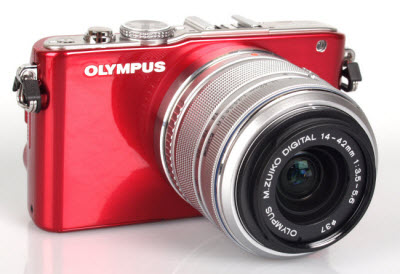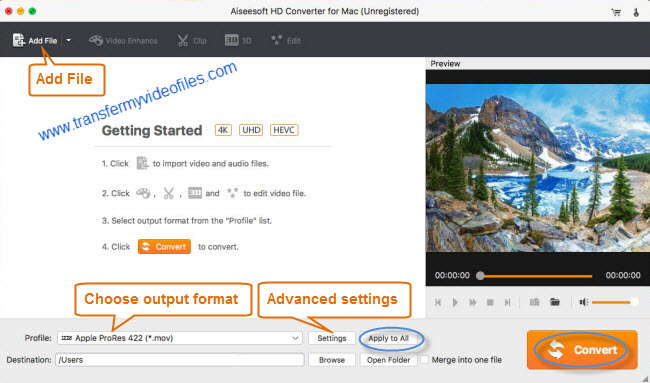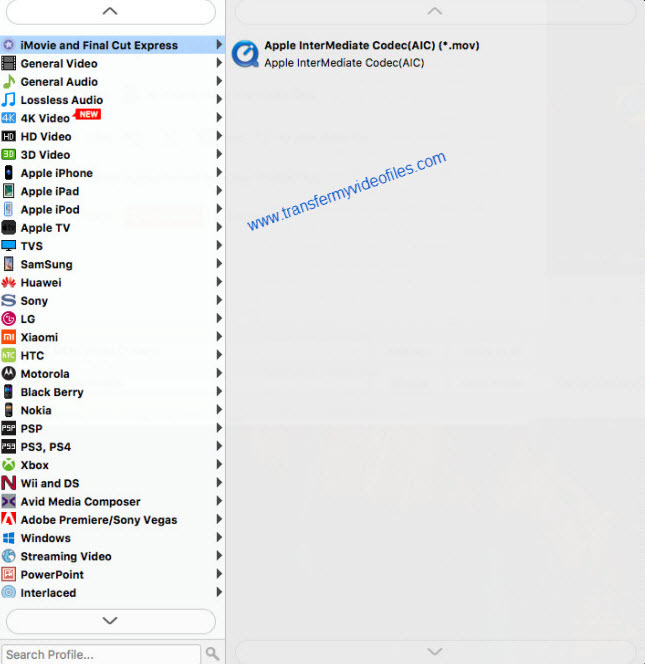Summary: If for some reason you can not import Olympus AVCHD footage shot by E-PL3 camera to iMovie for further editing, this post guide you through the process of converting Olympus AVCHD files to AIC for editing use in iMovie.
 “Hey all, I just bought a new Olympus E-PL3 compact system camera (also known as the Olympus PEN Lite). It saves the videos into its SD media card in AVCHD format. I encountered import issues when I attempted to edit them in iMovie (I have a current Mac and on iMovie 11). I saw someone said that AVCHD is a proprietary format that needs to be converted before editing/importing to iMovie. I know there is software to do the actual converting, but what’s the best format to import into iMovie?”
“Hey all, I just bought a new Olympus E-PL3 compact system camera (also known as the Olympus PEN Lite). It saves the videos into its SD media card in AVCHD format. I encountered import issues when I attempted to edit them in iMovie (I have a current Mac and on iMovie 11). I saw someone said that AVCHD is a proprietary format that needs to be converted before editing/importing to iMovie. I know there is software to do the actual converting, but what’s the best format to import into iMovie?”
What’s the best suited editing format for iMovie?
If you have a current Mac and are on iMovie 11 or iMovie 8 or 9, you can transcode Olympus E-PL3 AVCHD clips into Apple Intermediate Codec. This works well for SD and HD files. There are many programs out there to do the converting. If your concern is ease of use and excellent image and sound quality, you can try out our Video Converter for Mac (it works well as an Olympus AVCHD to iMovie Converter).
Download Olympus AVCHD to iMovie Converter

How to transcode Olympus E-PL3 AVCHD clips to AIC for iMovie?
Follow these steps:
1. Open up Video Converter as an Olympus AVCHD to iMovie Converter. In the main interface, click ‘Add Video’ button to load your source AVCHD MTS files from your camera or from a folder stored on your HDD that contains your source media.

2. From the ‘Profile’ list, choose ‘Apple InterMediateCodec (AIC) (*.mov)’ as output format from ‘iMovie and Final Cut Express’ column.
Important: If you’ve loaded a number of MTS clips to do batch conversion, please do remember ticking off ‘Apply to All’ option before you start.

3. If you intend to modify video and audio settings in your own way, you can click on ‘Settings’ to do so. On the popup ‘Profile Settings’ panel, you are allowed to adjust video and audio parameters such as video codec, video bit rate, frame rate, audio codec, audio bit rate, sample rate and audio channels. (Optional)
4. When ready, click on ‘Convert’ to start transcoding Olympus E-PL3 AVCHD files to AIC – the best suited editing format for using within Apple iMovie 11, or iMovie 8 or 9.
5. When the Olympus AVCHD to AIC transcoding process is complete, click on ‘Open Folder’ button to get the generated AIC QuickTime files. Now you are ready to import and edit Olympus E-PL3 AVCHD videos in iMovie successfully.
Also read:
Working with Sony HDR-PJ780VE 50p AVCHD MTS in iMovie
Convert DV files to MPEG-2 for burning a DVD on PC or Mac
Importing AVCHD video files from a Canon VIXIA R500 to Avid
How to make Canon EOS H.264 MOV files work smoothly in Avid?
